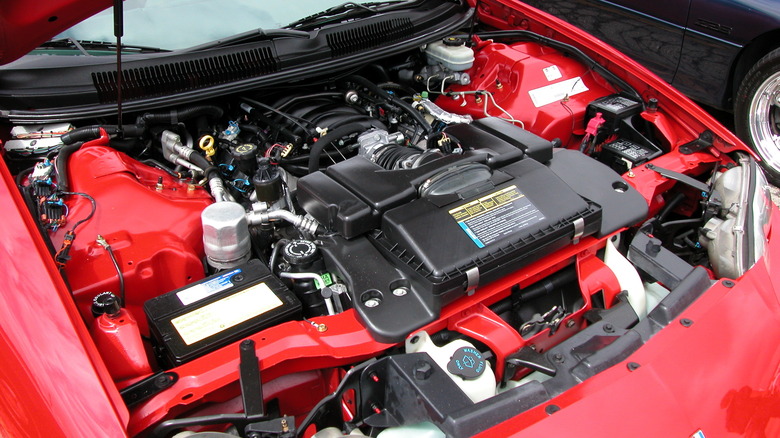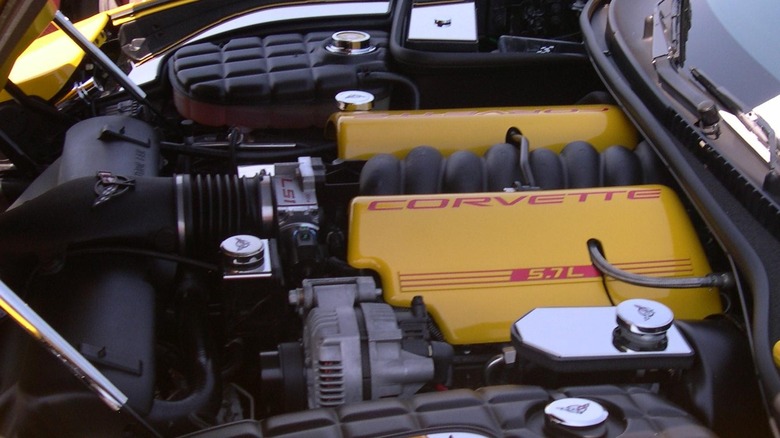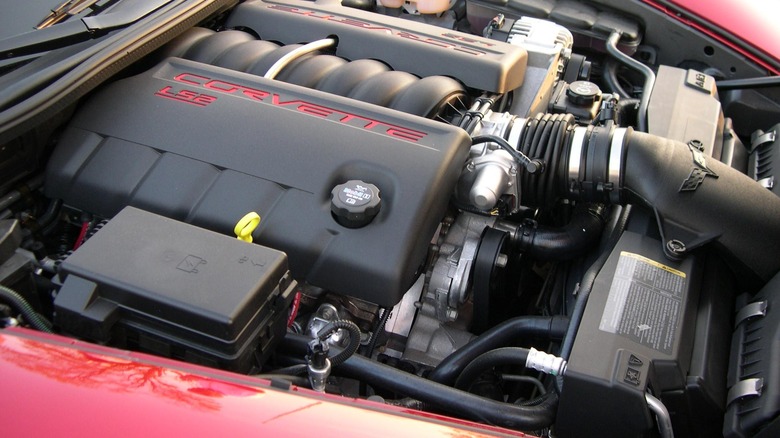GM's LS1 Vs. LS2 Engine: What's The Difference Between These Muscle Car Motors?
Chevrolet started making small block V8 engines all the way back in the mid-1950s and has had many different generations in that time. For over 40 years, Chevrolet made different sizes and variations, but the basic design structure of the company's small block engines for its first two generations remained almost the same. Then 1997 rolled around, and we saw the third generation of what these small block engines could be. These were now to be known as LS engines, importantly taking the name of the parent company General Motors rather than the Chevrolet brand. Since their creation, the GM LS engines have been some of the most acclaimed small block V8s ever.
The third generation began, as you would expect, with the GM LS1 engine. This engine would remain in production until 2005, when the next generation of the engine would emerge. That would be the LS2. While one certainly built off the other and share a good deal in common, the two engines do have plenty of distinct characteristics that some would prefer one over the other. Let's examine the details of these two different generations of General Motors LS engines and see where they diverge from one another, in case you were considering doing an LS engine swap.
[Featured image by Rich Niewiroski Jr. via Wikimedia Commons | Cropped and scaled | CC BY 2.5]
What is a GM LS1?
The previous generations of these small block engines were made with a cast iron block, but with the new General Motors LS1 engines, a change was made to instead make them out of aluminum, which was also used for the cylinder heads. By doing this, GM was able to drastically reduce the weight of the engines, and while that did reduce the power capabilities, it makes for a more balanced driving experience. GM gave the engine a bore of 3.9 in. with a 3.62 in. stroke, creating 5.7L of engine displacement. The cast iron you would be able to find was used for the crankshaft for durability.
Despite mostly using aluminum instead of iron, the GM LS1 still was able to handle a good amount of power. When first placed into a Chevrolet Corvette C5 in 1997, it was able to generate up to 345 hp and 350 lb-ft of torque. A few years later, those numbers increased slightly to 350 and 365, respectively, when GM made some improvements to the intake and exhaust manifolds. Not only could you find the LS1 in pony cars like the Pontiac Firebird, Chevrolet Camaro, and aforementioned Corvette, it could also power up larger sedans like the Holden Statesman.
The LS1, along with its high-output LS6 counterpart, enjoyed eight years of production before being replaced by the fourth generation of the small block engine. Although their differences may be small, they are significant.
[Featured image by unknown via Wikimedia Commons | Cropped and scaled | CC BY-SA 3.0]
What is a GM LS2?
If the GM LS1 first found its place in the Chevrolet Corvette C5, then it only makes sense that General Motors decided that the LS2 V8 engine would make its debut in the 2005 model of the Chevrolet Corvette C6. The most obvious difference between the LS2 and its predecessor is the volume of its displacement. GM took the previous engine and increased the bore from 3.9 in. to 4.0 in. while keeping the length of the stroke the same, thus bumping up the displacement to an even 6.0L. In that Corvette, this could get up to 400 hp and 400 lb-ft of torque.
Another major change was technological and came from the introduction of General Motors' Active Fuel Management. What this feature — also sometimes called displacement on demand — does is reduce the number of cylinders being used by half during driving situations that are not particularly arduous on the engine. So, if you are cruising on the highway, only half of your cylinders will be functioning. When you need all of your cylinders, like when going up a hill, they will automatically kick in. Active Fuel Management has shown to improve fuel economy up to 12% for the LS2, and while that doesn't seem like a huge number, any kind of efficiency boost for an engine is a plus.
Most of what forms the LS2 is in the LS1, which is why many of the parts are interchangeable between the two, though they aren't always in the exact same place. The LS2 just made some tweaks to keep up technologically with the times.
[Featured image by Stephen Foskett via Wikimedia Commons | Cropped and scaled | CC BY-SA 3.0]


